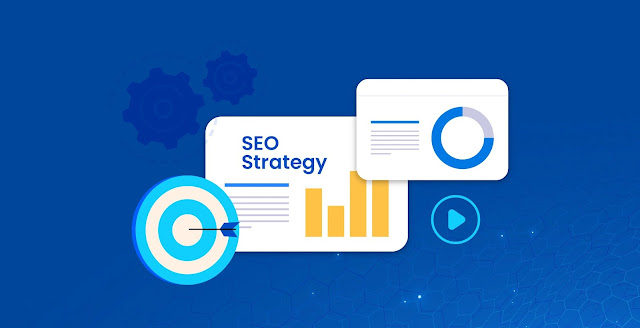How to Use Map Scrapers to Generate Leads for Your Business?
In today’s world, companies must have innovative devices in order to stay on top of the game. Lead generation, one of the most important business growth factors depends heavily on how well companies are able to gather relevant customer information. Map scrapers are among these tools, and their allies. By automatically pulling out company data from maps such as Google Maps, companies have a lead bank at their fingertips.
Map scrapers help companies to get location-based information like business name, phone number, reviews, and service types. For marketers or sales teams, that means being able to target certain groups, segments or geographies in a very specific way. Learn in this post how to implement map scrapers to take your lead generation game to the next level and scale your business.
Understanding Map Scrapers and Their Role in Lead Generation
Map scrapers are automated mapping platform data scrapers. They are used mainly to collect useful data about companies such as names, addresses, telephone number, website and ratings. Such instruments save time and error from manual data collection. As a result, companies are given detailed data that can be leveraged in marketing, customer acquisition or competitive intelligence.
Google Maps extractor : This tool provides a lot of high-quality leads to businesses by allowing them to see who their customer is. They let people sort the data according to parameters such as location, industry or rating of businesses. For example, a company targeting small cafes in one city can create a list of leads with a scraper in just minutes. These tools are fast and precise, and they are the only tool that should be a part of every business looking to streamline their lead generation process.
Map scrapers are not just for lead generation, but market studies and competitive analysis. In this way, businesses can look for trends in the market, or service shortages, or even compare their products and services with those of competitors using the data derived. For instance, a new product launch startup could scrape to get the data of current competitors, where they’re located, and customer feedback trends.
Map scrapers also offer niche targeting, so companies can narrow their campaigns. Such tools can be employed by local contractors (eg, electricians or plumbers) to find homes that require their services in. This attribution capacity helps in lead generation and general business decisions as well.
Which Map Scraper Software is Best for Your Business?
It is very important to pick the right map scraper to get the best results in lead generation. As the options are many (e.g., Google scraper software or data scrapers for Google Maps), companies have to consider their needs and requirements before choosing. Data quality, user-friendliness, cost, and support can all help make this selection.
A good map scraper should not disrupt your current workflow or processes. It will need to, for instance, export data directly to spreadsheets or CRM systems. A few scrapers even have premium features, like filters, built-in analytics, which is ideal for companies with sophisticated data requirements. Only when you assess your business objectives and can see how a tool contributes to those objectives will the best possible outcome be delivered.
You also need to pay attention to legal and ethical issues when deciding which map scraper to choose. Since scraping data is about accessing data which is on external sites, you want to make sure that the tool can do so within allowed ranges. Choosing tools that are compliant with Google Maps terms of service and data privacy guidelines will save you from future legal troubles.
Businesses must also take scalability into account when choosing a scraper. : A simple scraper is enough for startups that have very minimal data needs. But the larger businesses who have to deal with large quantities of data will receive the most advanced solutions with the most processing power. Just by tailoring the tools functionality to your goals you can make the most of map scrapers for lead generation.
Setting Up and Using a Map Scraper Effectively
Setting up a map scraper is easy, but you have to do it with care to get the best out of it. Begin by specifying what you need from the data (where, businesses, data fields). For instance, you might want to a target restaurant in one city, so your scraper will need to collect name, phone number, address, and reviews of restaurants in that category.
When you’ve identified what you need, set up the scraper tool. The majority of map scrapers enable the user to type in certain search criteria so only the relevant data gets scraped. Scrape Google Maps for Companies in 5mile radius of your Target: You can Scrape Google Maps for Companies within 5miles of your Target. Always checking the results and updating your parameters to make sure the leads you get are of higher quality.
As important as the scraping is is how to make use of the retrieved data. Once you have the data, arrange it for analysis and intervention. All scrapers usually can export data to any type of file (eg CSV or Excel), so it’s perfect for big files.
Then use the retrieved information in your lead generation. You can use the details to send out emails marketing or cold calls, for example. Find out what people are saying about your product and review or rate to cater to a pain. When combined with insights culled from the data, with the right outreach tactics, you can turn information into leads.
Leveraging Map Scraper Data for Targeted Marketing Campaigns
Among the most effective uses of map scraper data is to run targeted campaigns. This high degree of detail offered by these tools lets companies target their clients on different axises like location, industry, or company size. This categorization makes it possible to market very targeted and relevant messages that appeal to customers.
For example, digital marketing company can use map scraper information to search for small business which wants online marketing services. They have information, such as business websites and customer reviews, they can make customized offers that are oriented to specific needs. Personalised campaigns are not just good for engagement, but also have a better chance of converting leads to customers.
Additionally, map scraper data is used for remarketing and retention. Businesses can refine products and messaging by measuring customer behaviour and feedback patterns. An eCommerce company, for instance, might reach out to customers who left bad reviews on other brands’ pages by giving them a discount or promotions to switch brands.
What’s more, the information gathered from the map scraper can be used to influence content in marketing. Blog articles, social media posts or email newsletters can be curated around common business issues within an industry or area. Map scraper data is something businesses can utilize effectively to make the most out of their campaigns.
Overcoming Challenges and Ensuring Compliance
Map scrapers are a lot of work, but they also come with some limitations businesses have to face in order to make use of them. A common problem is to get the data right. Mapping apps are always updating data and outdated data makes for inefficient campaigns. This can be prevented by regularly re-entering and confirming the information extracted from your scraper.
Big data is a second problem. To the business that is scraping big data, data visualization and re-composition can be insurmountable. It can be easy to automate this by using data visualisation tools or inserting the scraped data into CRMs to get insights for real use. If companies can anticipate these difficulties, map scrapers have their work cut out for them.
Athority is a second essential point with map scrapers. These tools also access data from third-party systems, and so they need to respect the ethical and legal requirements. You can be fined or prosecuted if you violate Google Maps’ terms of service or data privacy policies.
Companies should use tools that are compatible with data privacy laws and safeguard private data. What’s more, customers should be able to trust and have confidence in your data use by sharing their data openly. Businesses can use map scrapers in a responsible and effective way only if they learn these problems early on.
Measuring Success and Scaling Your Lead Generation Efforts
Tracking the performance of your lead generation activities is critical for re-engineering and scaling. Start with some specific metrics and KPIs (Key Performance Indicators), like the number of leads or conversion rates, or ROI. You’ll learn by monitoring these metrics regularly to know if your map scraper campaigns are performing.
For instance, if you ran an offline campaign for local companies and it got a lot of conversions, that means your targeting criteria and outreach effort worked. Low engagement, on the other hand, could indicate you have to adjust data collection or campaign implementation. By regularly checking performance indicators, businesses can get more value from their lead generation.
If lead generation is working for you, consider a bigger business. That can be by looking to new markets, industries or segments. A real estate firm, for example, that was able to take advantage of map scrapers to market itself to city residents could target the suburbs or rural areas.
Upgrade to better scraping tools or add AI driven analytics to increase scalability. These new features help to collect data more quickly, target the customer more accurately and understand their behaviour better. Combining performance analysis with strategic scaling can help businesses use map scrapers to gain permanent growth.
Conclusion
Map scrapers are disrupting how companies approach lead generation by offering you location-specific data. The scope of use is endless from finding the right audience to building targeted marketing campaigns. Businesses can use map scrapers to stay ahead of a crowded market by selecting the right tools, being compliant and constantly improving tactics.
In fact, when implemented correctly tools such as Google Maps scraper can transform a piece of data into a value proposition that generates opportunities for expansion and customer relationships. Using this technology isn’t just about the next evolution, it’s the next evolutionary step to your company’s future in the data-rich world.

.png)




